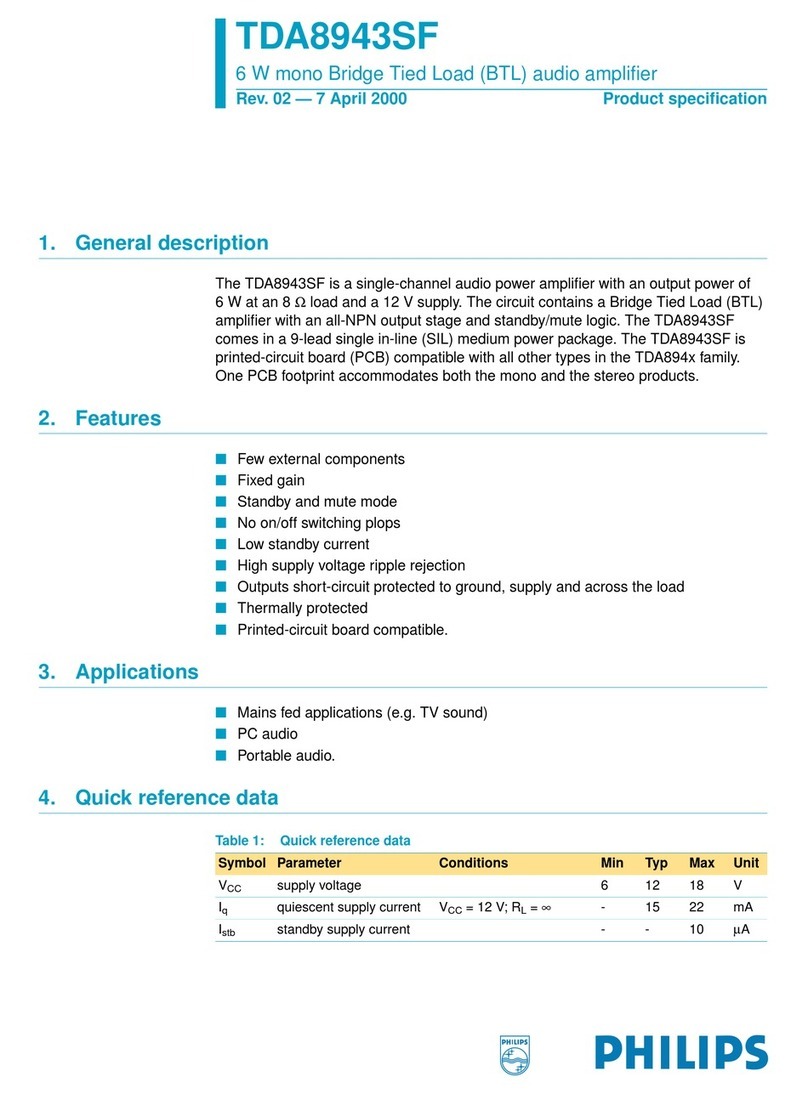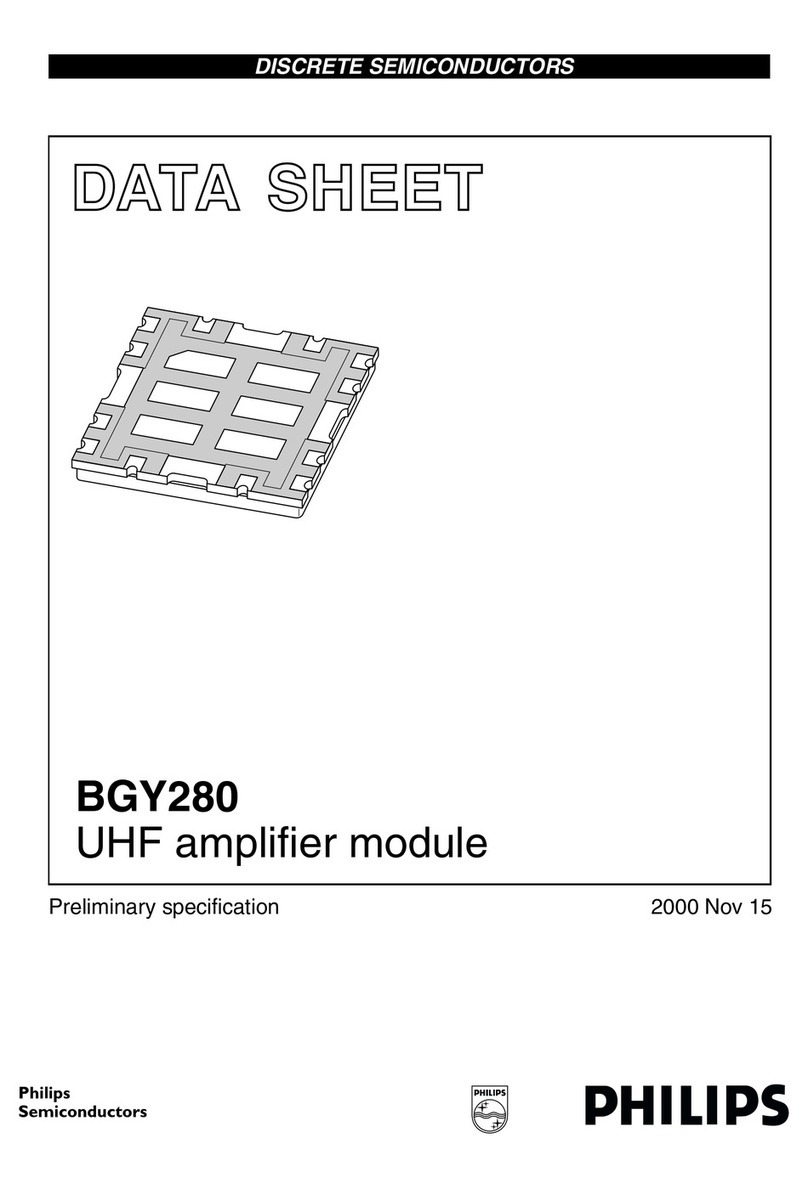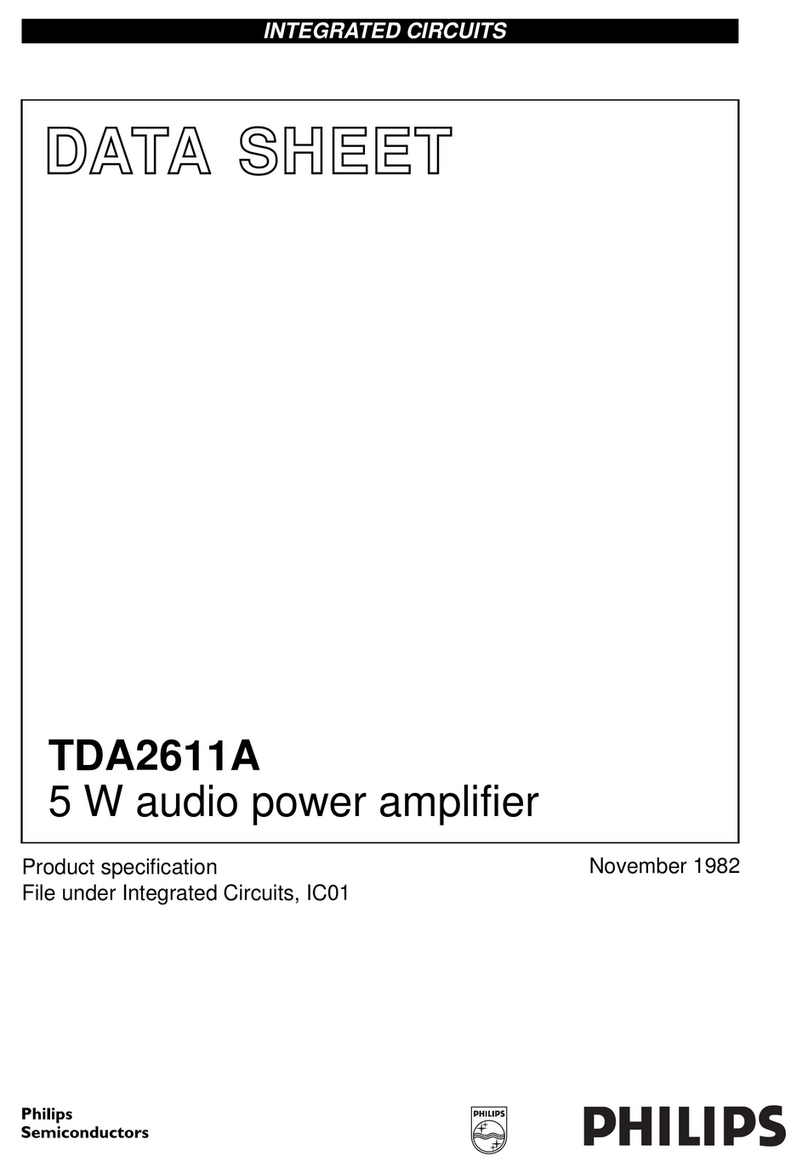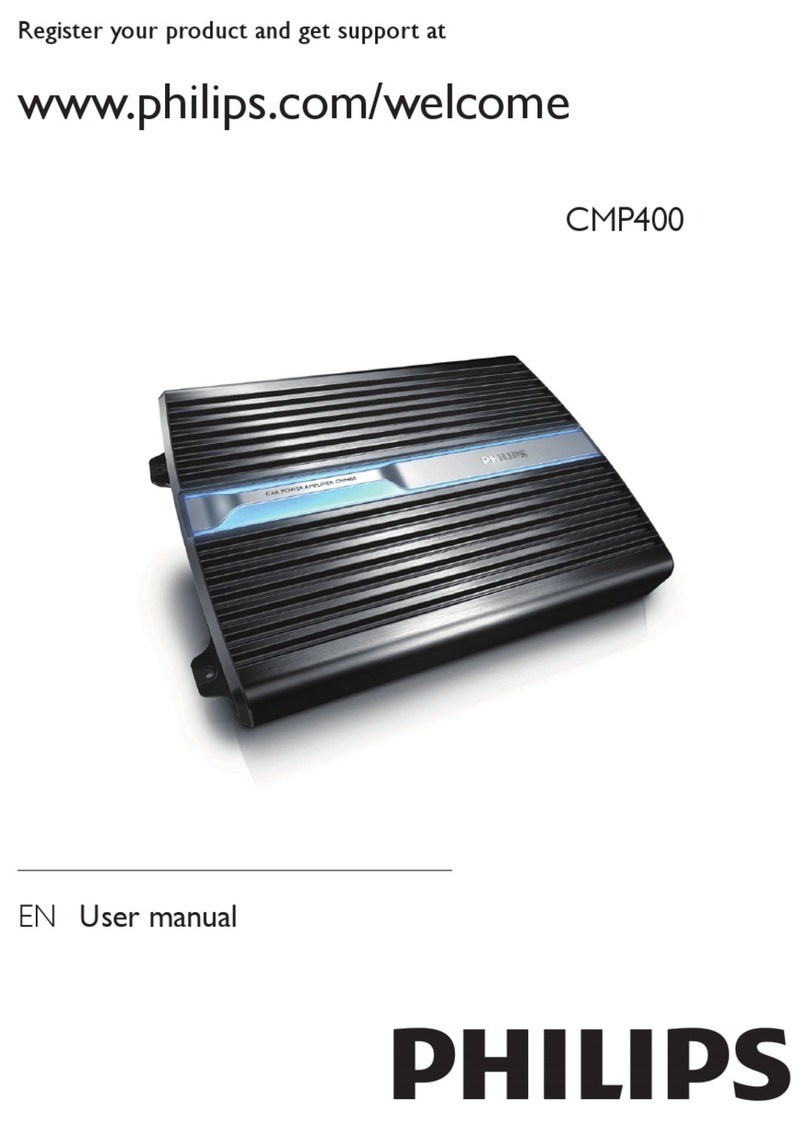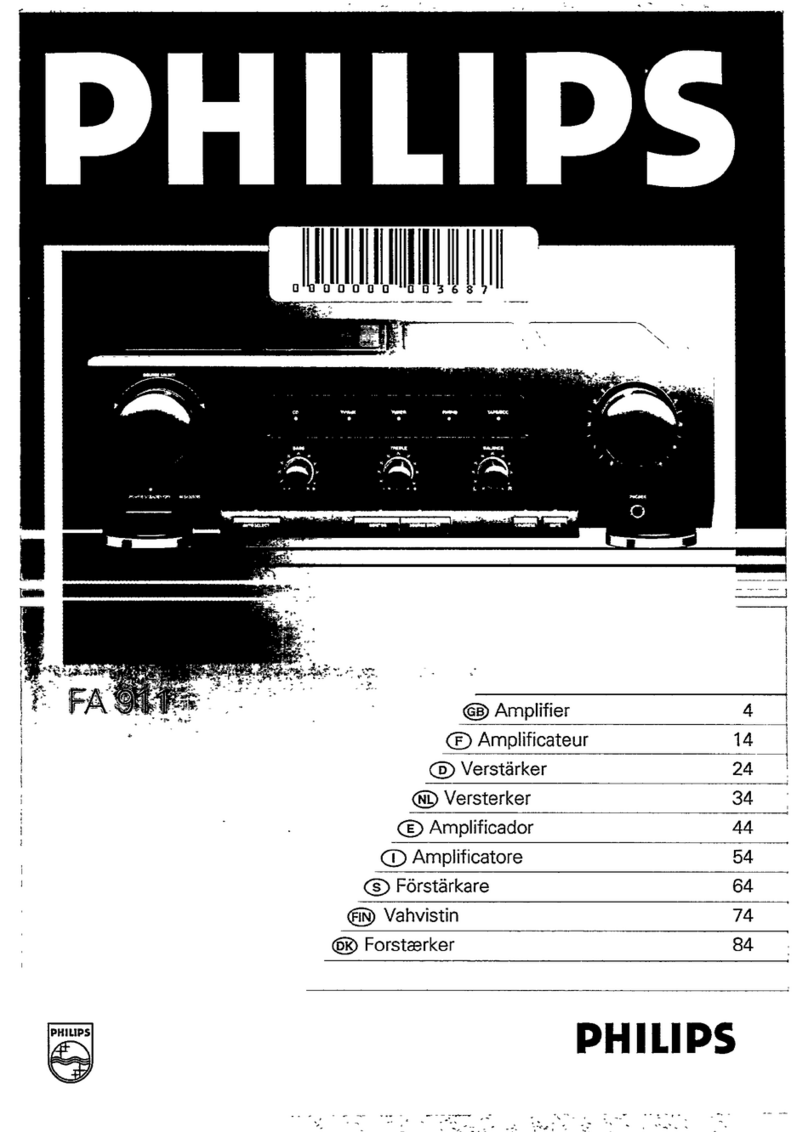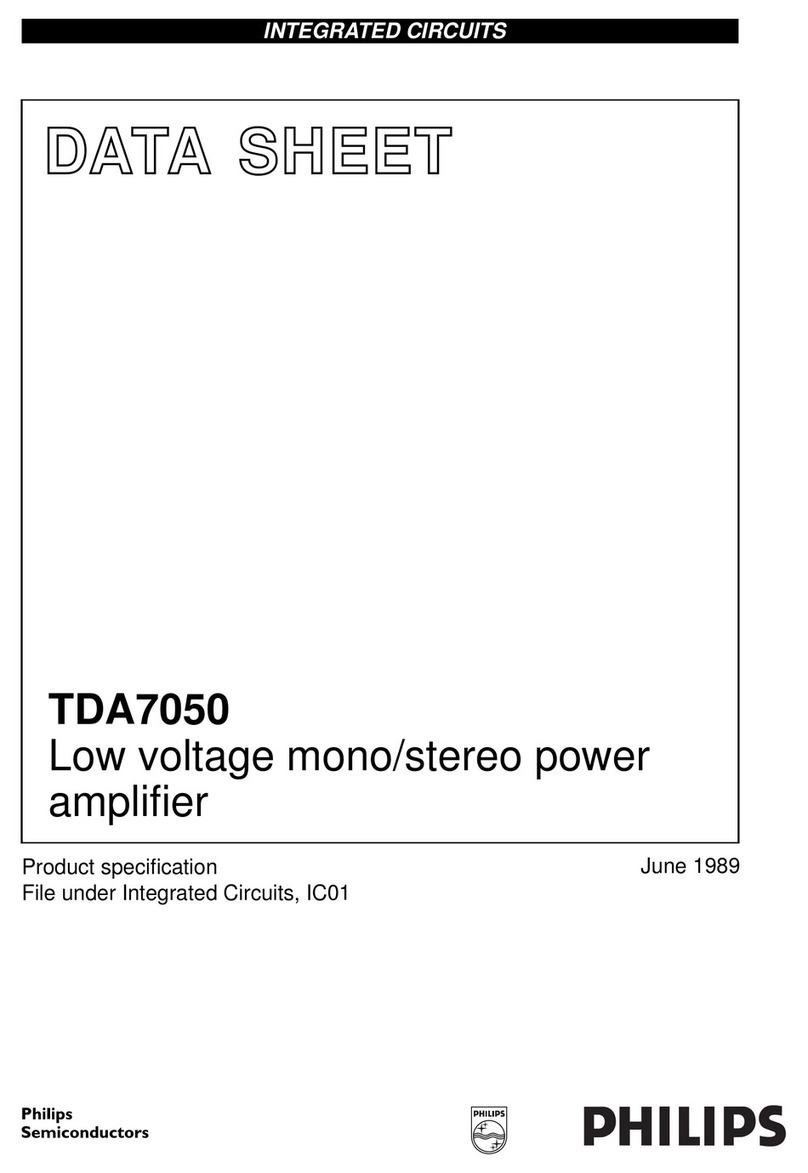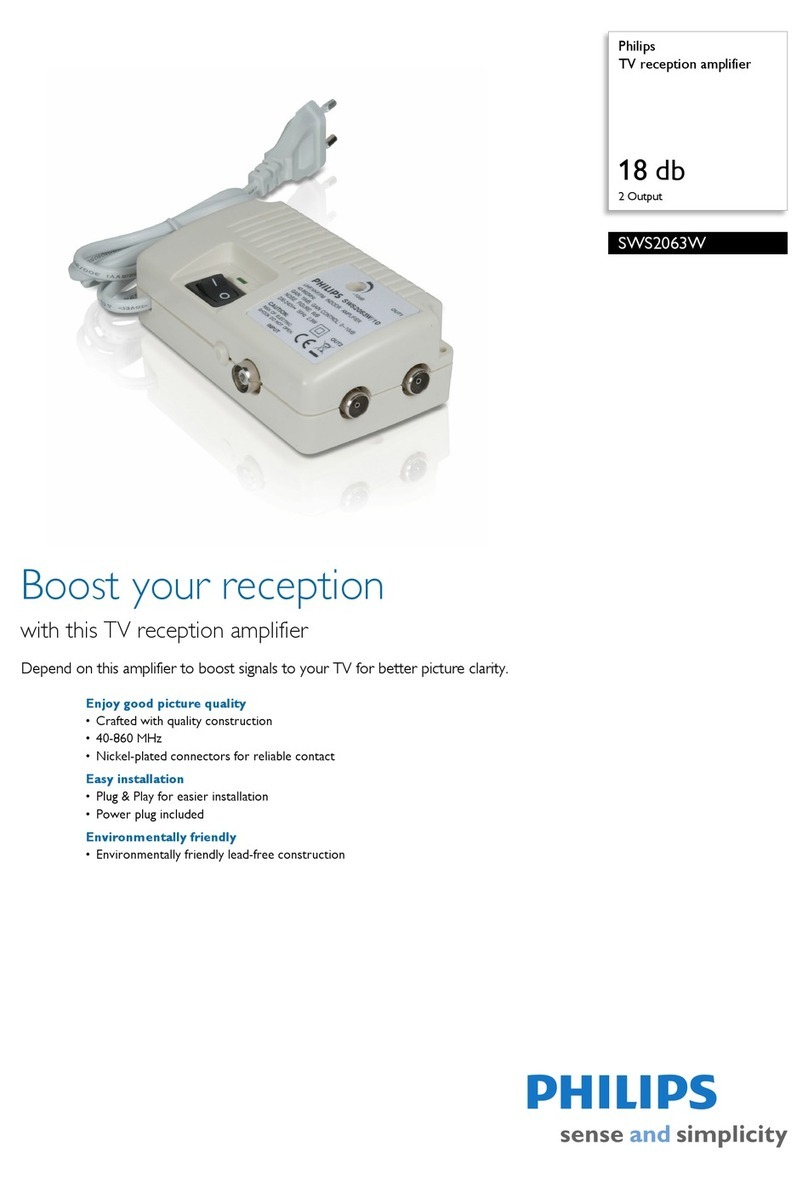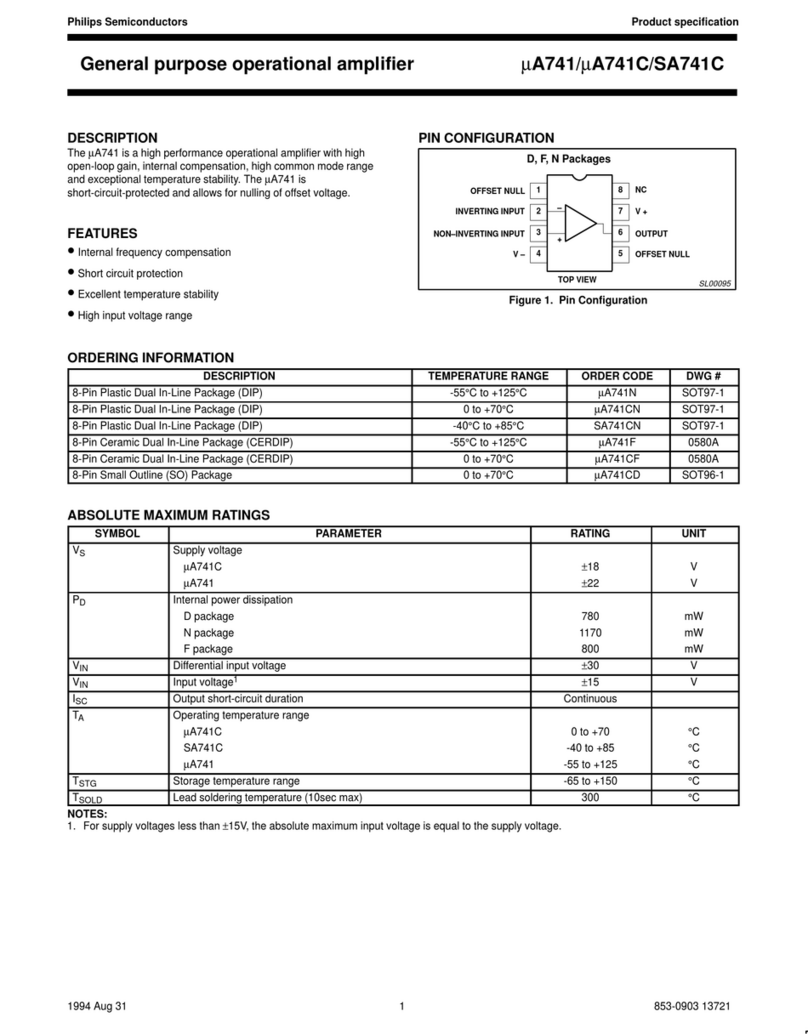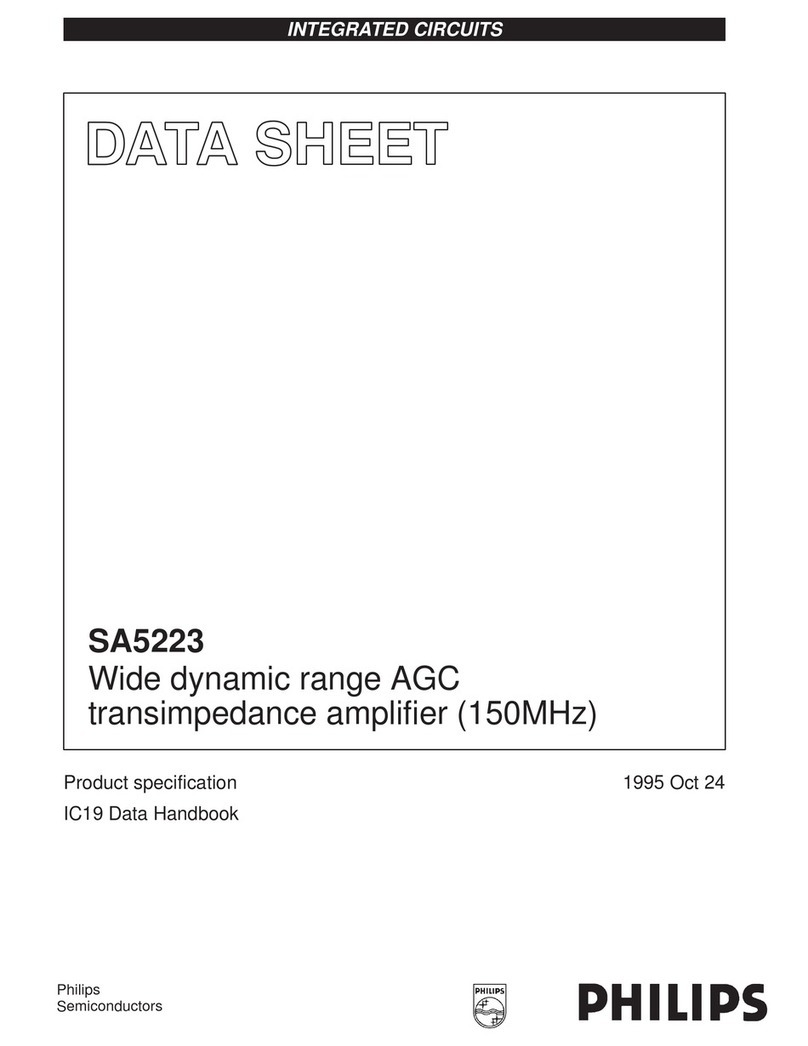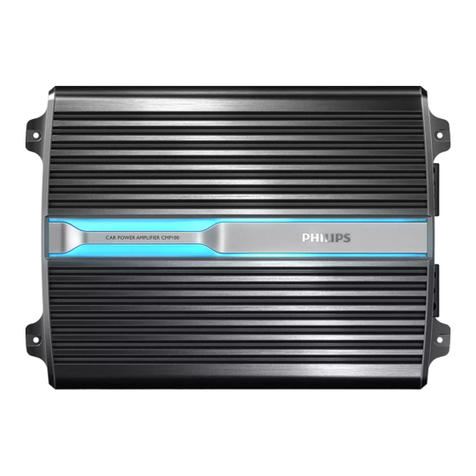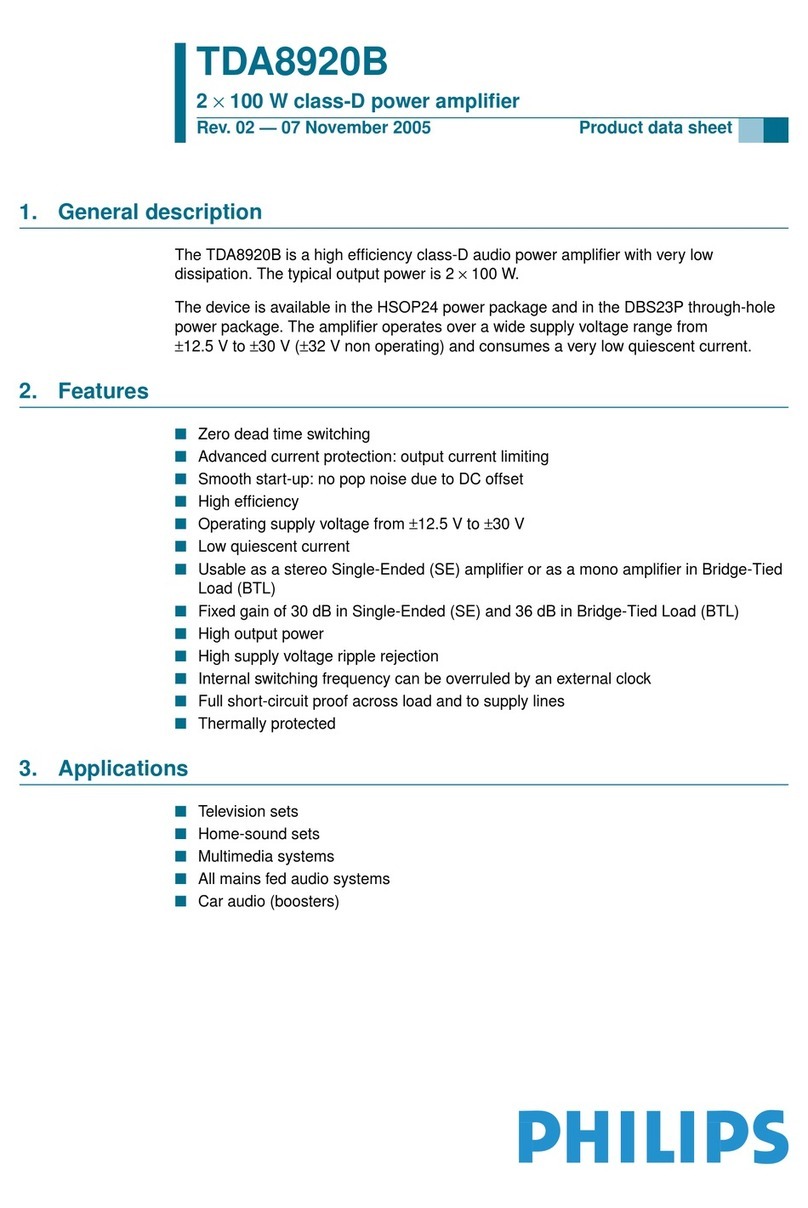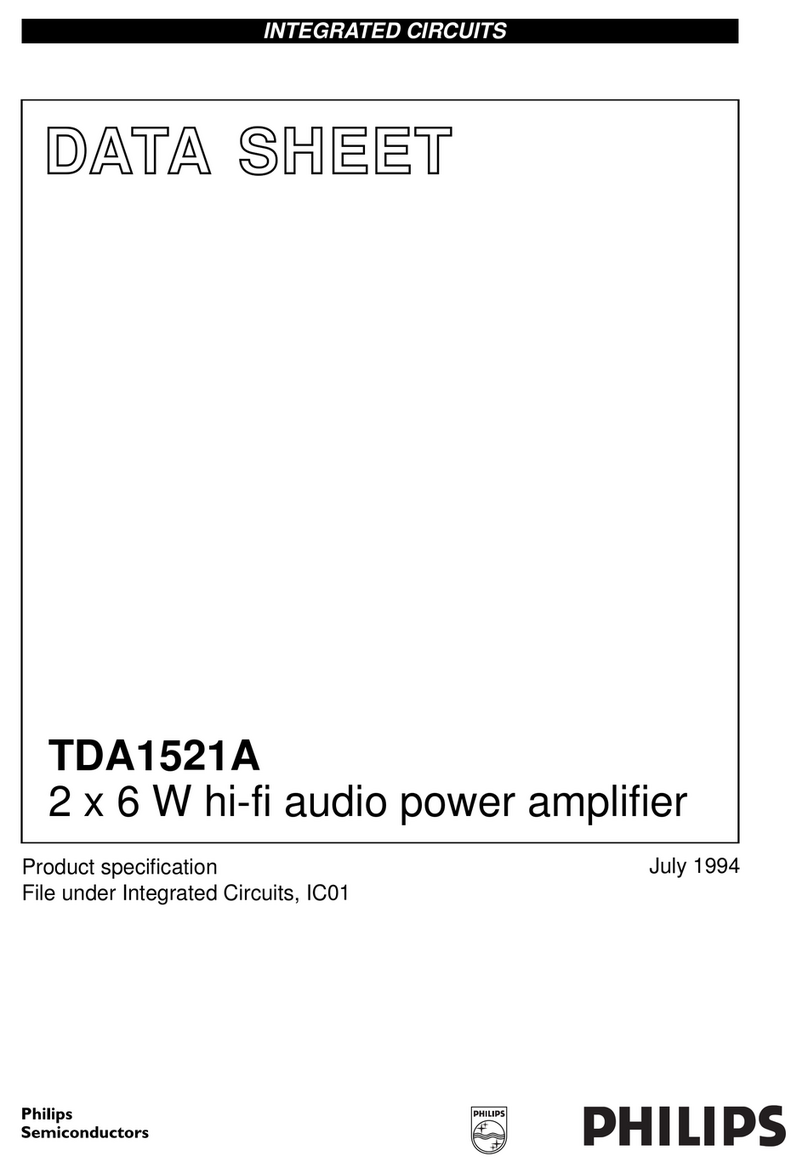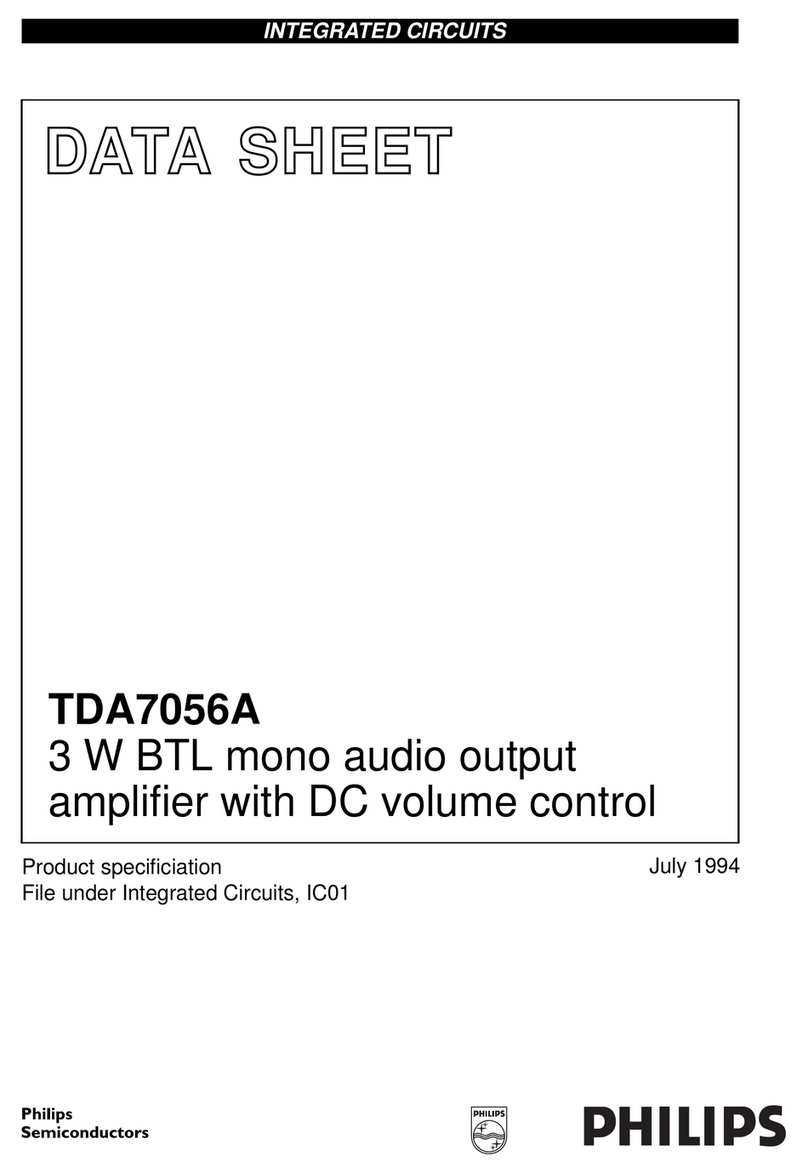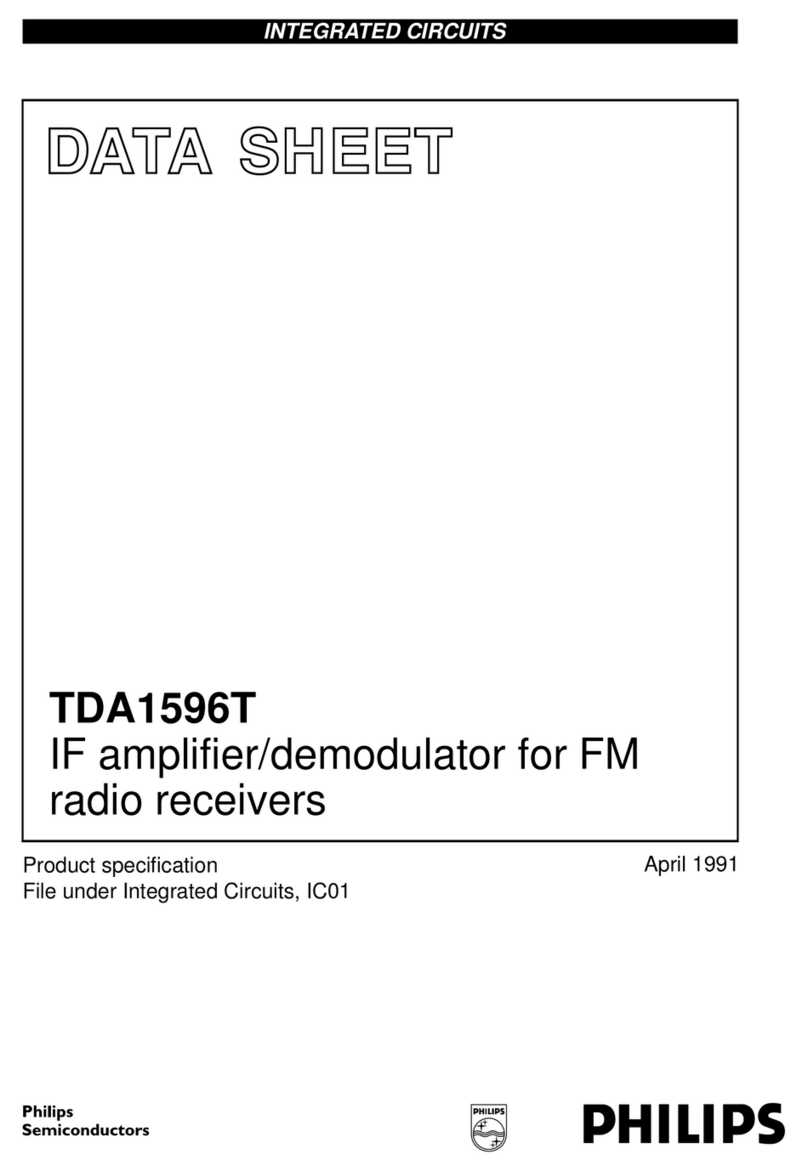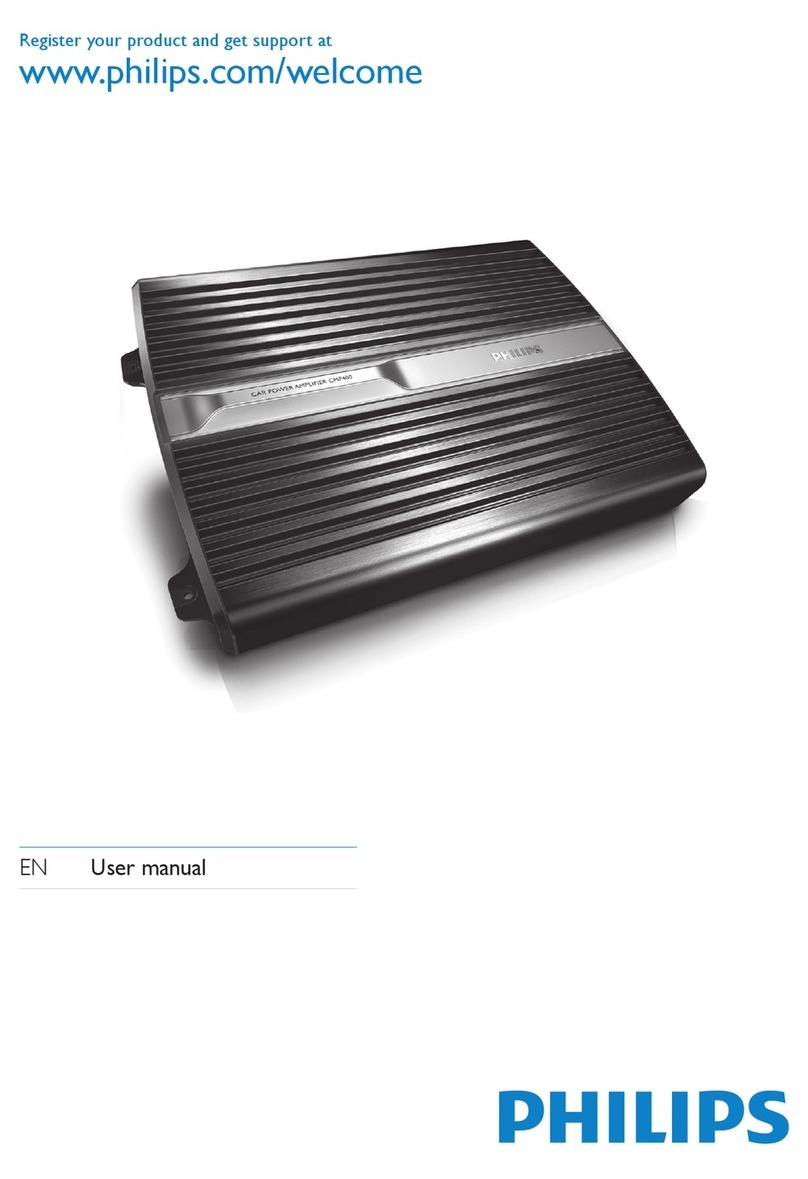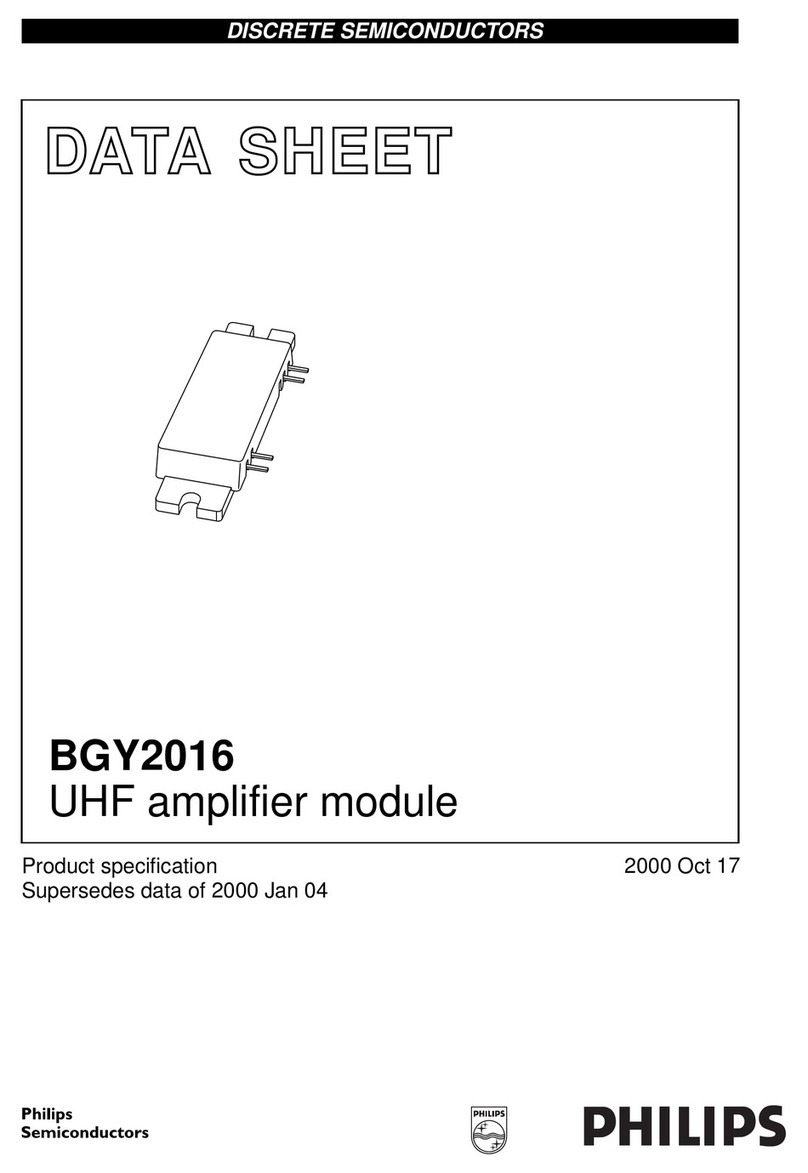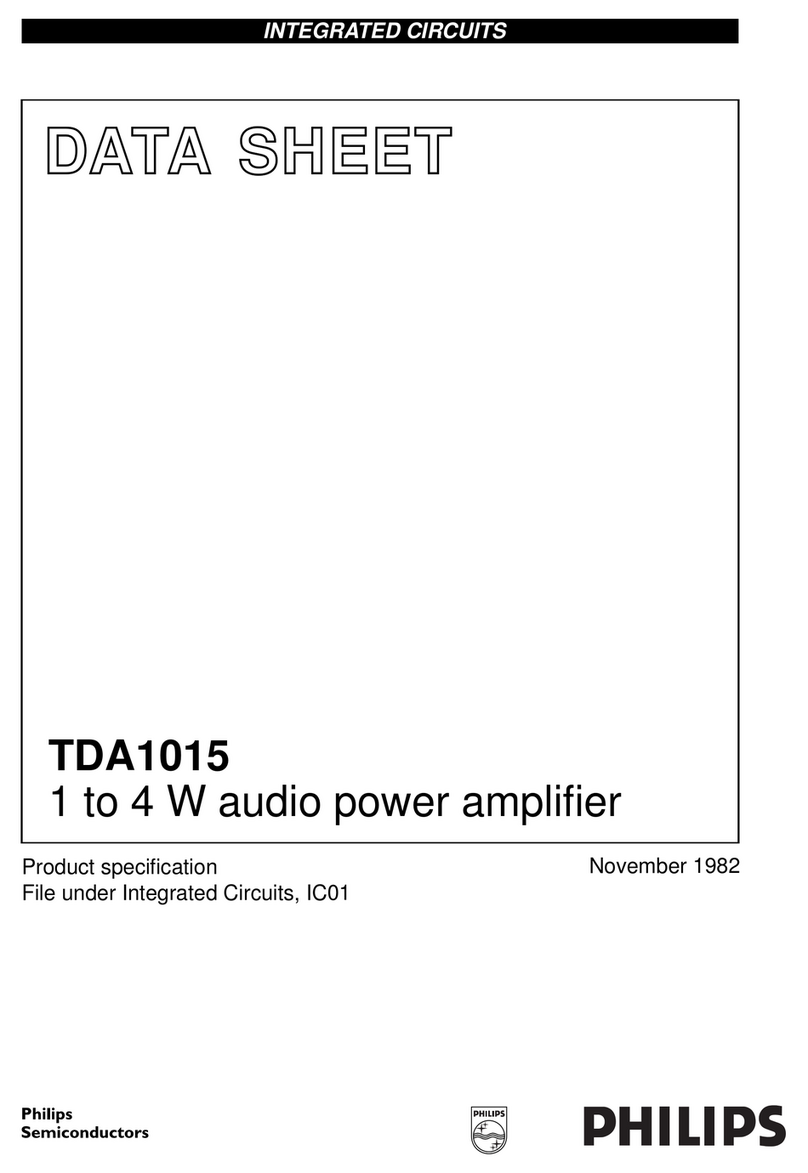
March 1994 5
Philips Semiconductors Preliminary specification
Triple video output amplifier TDA6103Q
CHARACTERISTICS
Operating range: Tj= −20 to 150 °C; VDD = 180 to 210 V; Vip = 1 to 4 V.
Test conditions (unless otherwise specified): Tamb = 25 °C; VDD = 200 V; Vip = 1.3 V; Voc1 = Voc2 = Voc3 = 1⁄2VDD;
CL= 10 pF (CLconsists of parasitic and cathode capacitance); Rth h-a = 18 K/W; measured in test circuit Fig.5.
SYMBOL PARAMETER CONDITIONS MIN. TYP. MAX. UNIT
IDD quiescent supply current 7.0 9.25 11.5 mA
Ibias input bias current inverting inputs
(pins 1, 2 and 3) −5−1+1µA
I
bias input bias current non-inverting
input (pin 5) −15 −3+1µA
V
i(offset) input offset voltage
(pins 1, 2 and 3) −50 −+50 mV
∆Vi(offset) differential input offset voltage
temperature drift between pins 1
and 5; 2 and 5; 3 and 5
−tbf −mV/K
Cicm common-mode input capacitance
(pins 1, 2 and 3) −5−pF
Cicm common-mode input capacitance
(pin 5) −10 −pF
Cidm differential mode input capacitance
between 1 and 5; 2 and 5; 3 and 5 −1−pF
Voc(min) minimum output voltage
(pins 7, 8 and 9) V1−5= V2−5= V3−5= −1V −510V
V
oc(max) maximum output voltage
(pins 7, 8 and 9) V1−5= V2−5= V3−5= 1 V;
note 1 VDD −10 VDD −6 −V
GB gain-bandwidth product of
open-loop gain:
Voc1, 2, 3 /V
i1-5, 2-5, 3-5
f = 500 kHz −0.75 −GHz
BSsmall signal bandwidth
(pins 7, 8 and 9) Voc(p-p) = 60 V 6 7.5 −MHz
BLlarge signal bandwidth
(pins 7, 8 and 9) Voc(p-p) = 100 V 5 7 −MHz
tpd cathode output propagation delay
time 50% input to 50% output
(pins 7, 8 and 9)
Voc(p-p) = 100 V square
wave; f < 1 MHz;
tr=t
f= 40 ns (pins 1, 2
and 3); see Figs 7 and 8
−38 −ns
∆tpdifference in cathode output
propagation time 50% input to
50% output (pins 7 and 8, 7 and 9
and 8 and 9)
Voc(p-p) = 100 V square
wave; f < 1 MHz;
tr=t
f= 40 ns (pins 1, 2
and 3)
−10 0 +10 ns
trcathode output rise time 10%
output to 90% output
(pins 7, 8 and 9)
Voc = 50 to 150 V square
wave; f < 1 MHz; tf= 40 ns
(pins 1, 2 and 3); see Fig.7
48 60 73 ns
tfcathode output fall time 90% output
to 10% output (pins 7, 8 and 9) Vo= 150 to 50 V square
wave; f < 1 MHz; tr= 40 ns
(pins 1, 2 and 3); see Fig.8
48 60 73 ns

